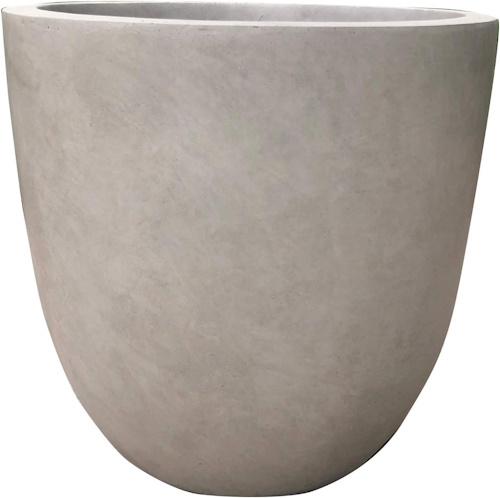Best trees to grow in pots – 16 species to suit any outdoor space
Growing trees in containers gives us so much more freedom to plant creatively on our patios and terraces

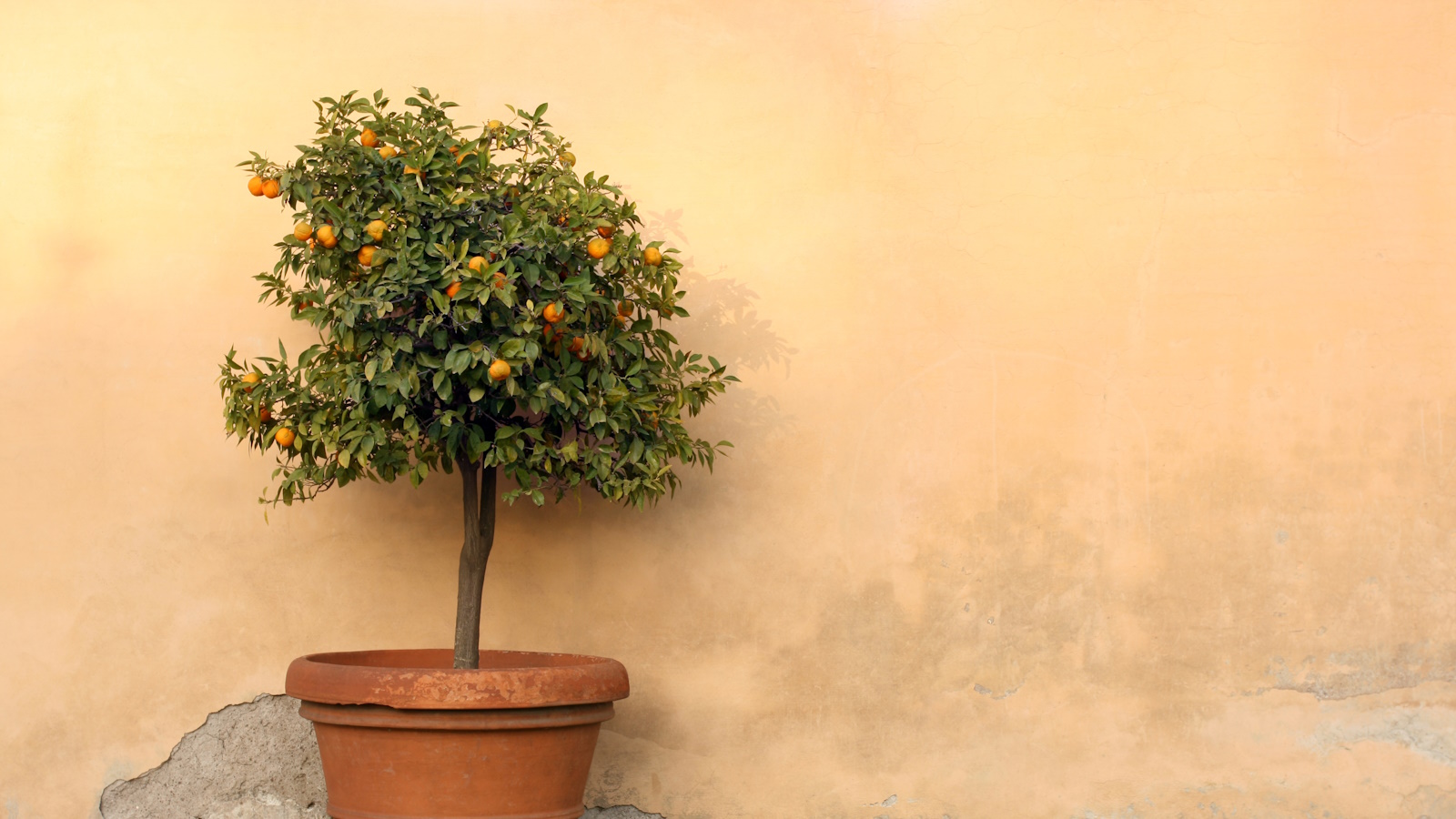
Among the best trees to grow in pots you will be sure to find the perfect option for adding to your patio, front porch, courtyard or other areas of your backyard. With deciduous and evergreen options offering a spectrum of leaf color, fruit and flowers through the seasons, potted trees are versatile container gardening ideas.
Growing pots in trees offer so many benefits. It is a way to zone a secluded seating or dining area as a patio idea; flowering trees can add color and scent; while citrus or olive trees are ideal if you want to create a Mediterranean-style garden. There are also plenty of low maintenance trees for pots so that you can grow them with ease.
One of the big advantages, of course, is you can grow tree species that wouldn't usually suit the growing conditions in your hardiness zone. I have nurtured many tree species in pots over the years, often as a result of renting and wanting to take my plants with me, and I move lots of mine, including a large olive and a lemon tree, indoors during the winter months. Here we have curated 16 of the best tree varieties to inspire you with your container planting this spring.
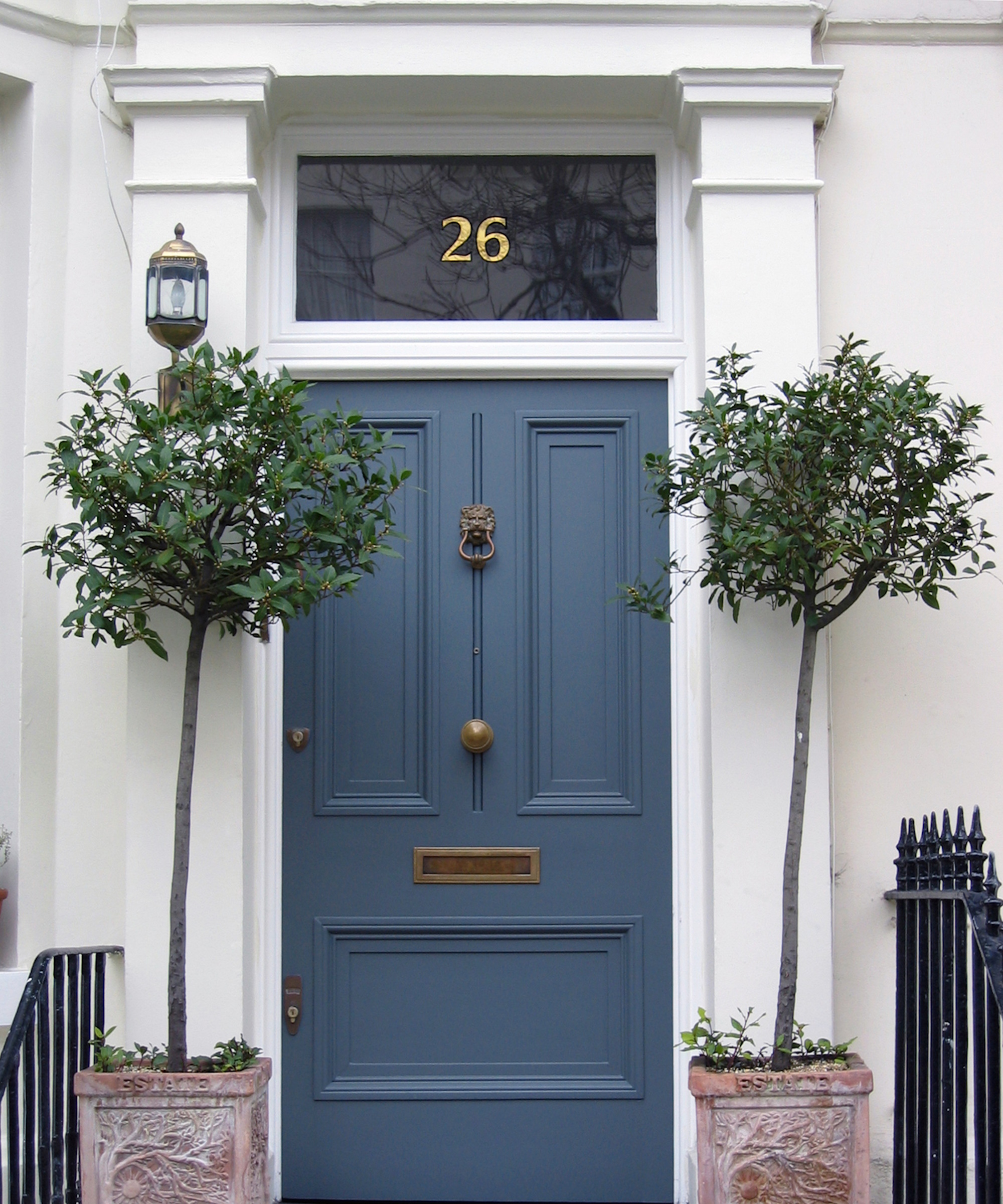
How to begin growing trees in pots
Many different trees can thrive in pots, so my advice would be to look beyond the local garden center for inspiration. You could even choose one of the best indoor trees that you move outdoors in warmer months to surround yourself with nature all year round.
If you want a low-maintenance planting scheme, then the best trees to grow in pots must be compatible with your local climate, and require minimal pruning. An advantage of planting trees in pots is that you can control their soil type – perhaps growing an acid-loving tree in a chalky soil, or creating free-draining conditions in a garden with heavy clay soil.
Consider where you want the tree to be positioned in your garden, as whether it will sit in full sun or receive some shade will be a factor in which varieties will be suitable.
It's important to look at the maximum size of a tree species, and how many years it will take to reach maturity. Some trees are suited to pots for their whole life, while other slow-growing varieties can have a long pot life before needing to be eventually planted in the ground as part of your flower bed ideas.
Design expertise in your inbox – from inspiring decorating ideas and beautiful celebrity homes to practical gardening advice and shopping round-ups.
Trees have hungry, thirsty roots, so container size is also key. Ensure you invest in a pot that's big enough for your chosen tree to flourish.
Remember, too, that a tree planted in a pot will dry out more quickly than in the ground, and the smaller the pot size, the more often you will have to water it.
16 of the best trees to grow in pots
1. Peach tree
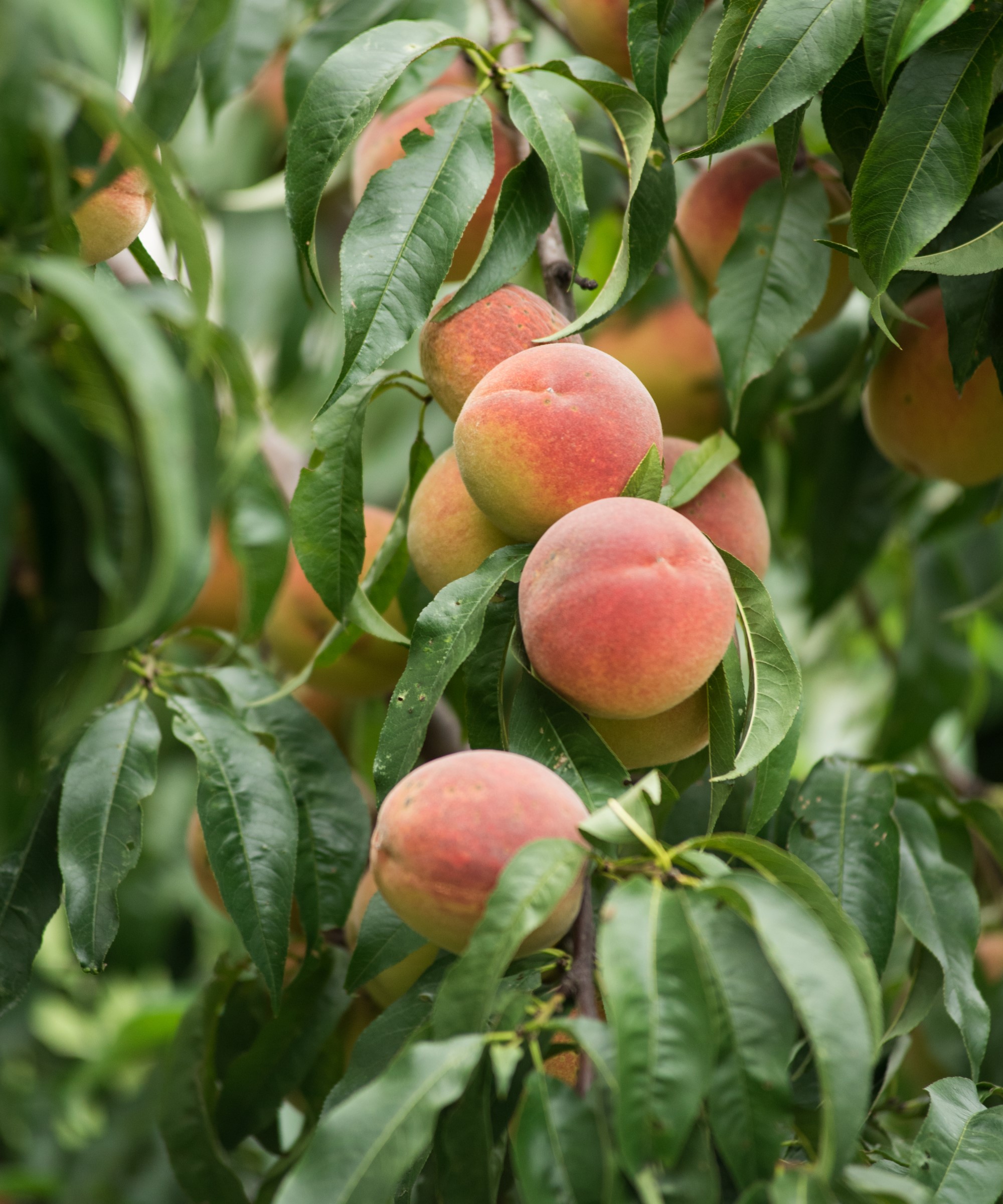
Enjoy a delicious home harvest of fruit by growing a peach tree in a container. These are among the best fruit trees to grow, and ideal for trees to grow in pots, particularly as you can move the container to the sunniest and warmest positions throughout the year.
You will need a fairly large container for growing a peach tree – although not so large that you can not easily move it when required. Good drainage is important, so either add some crocs or stones to the bottom of a container, or raise it up on pot feet to aid drainage. Discover when to plant a peach tree to get it off to the best start.
You will need to water peach trees grown in pots almost every day in the growing season, and repot them every few years.
USDA hardiness zones 4-10.
2. Crab apple tree

Producing lovely pink blossom in spring, followed by their ornamental fruits in fall, crab apples are among the best trees to grow in pots.
When planting crab apples in containers, use a pot that is approximately 12-15in. (30-40cm), in a good quality and free draining loam based compost.
Keep them well watered in the first growing season, watering them daily in warmer weather. You can discover how to prune crabapple trees, to keep them from getting too large in a container. They are also among the best trees for autumn color.
USDA hardiness zones 4-8.
3. Amelanchier

A small, compact deciduous tree, amelanchier – known by a number of other names including juneberry, shadbush and sarvisberry – offers interest through the seasons.
It produces lovely, starry white flowers in spring, red and purple berries in summer through to fall, and its bronze tinged young leaves turn through green to the fiery colors of orange and red, making this undoubtedly one of the best trees to grow in pots. And it is definitely one of the best trees to grow in a small garden.
Amelanchier prefers a spot in full sun, so move the container to the best spot throughout the year. Plant bare root trees for the most economical option, in ericaceous compost in a large pot.
USDA hardiness zones 4 - 8.
4. Japanese maple tree

Japanese maples trees – or acer palmatum – are ideal for smaller gardens, as they are slow growing and require minimal pruning or training. They also offer lovely fall color.
‘With a variety of showy cascades in foliage and colors ranging from vibrant greens to deep blood reds, this is a showcase tree for container growing,’ says Tammy Sons, owner of Tennessee Nursery.
‘Japanese maple trees do not grow to extreme heights, seldom reaching over 15 feet, she adds. 'My favorite varieties are 'Crimson Queen' and 'Bloodgood', with their added attribute of spectacular fall foliage.’
Position Japanese maples in a cool spot that receives some shade during the hottest part of the day, and water regularly in the summer. They are perfect to include as part of other Japanese garden ideas.
USDA hardiness zones 5 - 8.

Tammy Sons is the owner of Tennessee Wholesale Nursery, a third-generation family business based in Tennessee that grows an extensive selection of trees, shrubs, flowers, and other plants.
5. Lemon tree

‘I always think there is something very romantic about a lemon tree growing in a pot,’ says Aaron Bertelsen, author of Grow Fruit & Vegetables in Pots, available on Amazon. ‘Perhaps it is the way the scent of the blossom fills a room, or the knowledge that rich people in the past would build dedicated lemon houses to shelter their highly prized trees.’
While lemon trees make fantastic house plants during the winter, they can grow happily outdoors during the spring and summer. This is why planting them in pots is the best solution, so you can bring them indoors in frosty weather.
You can even learn how to grow lemon from seed, to surround yourself with these uplifting trees.
‘Lemons are hungry plants, so make sure you use a good, soil-based compost, adding some grit or sharp sand to improve drainage,’ adds Bertelsen, who recommends the Meyer variety as it flowers throughout the year.
Make sure you understand how to prune lemon trees to get the best out of them, and let them dry out between waterings.
USDA hardiness zones 9 - 11 (down to zone 4 if growing indoors.)
6. Dwarf conifers

Larger conifers are some of the best trees for privacy and screening in a backyard, but there are a number of smaller species that are perfect for pots.
Some recommended conifers to consider are dwarf varieties of cypress trees, yew trees, mountain pines, and Chinese juniper.
‘They are not top-heavy and have an equal branch structure from the central leader to the top,’ says Tammy Sons. ‘Evergreen conifers also offer year-round beauty and they can successfully be trimmed back in order for them to not overwhelm the container.’
USDA hardiness zones 2 - 8.
7. Crepe Myrtle
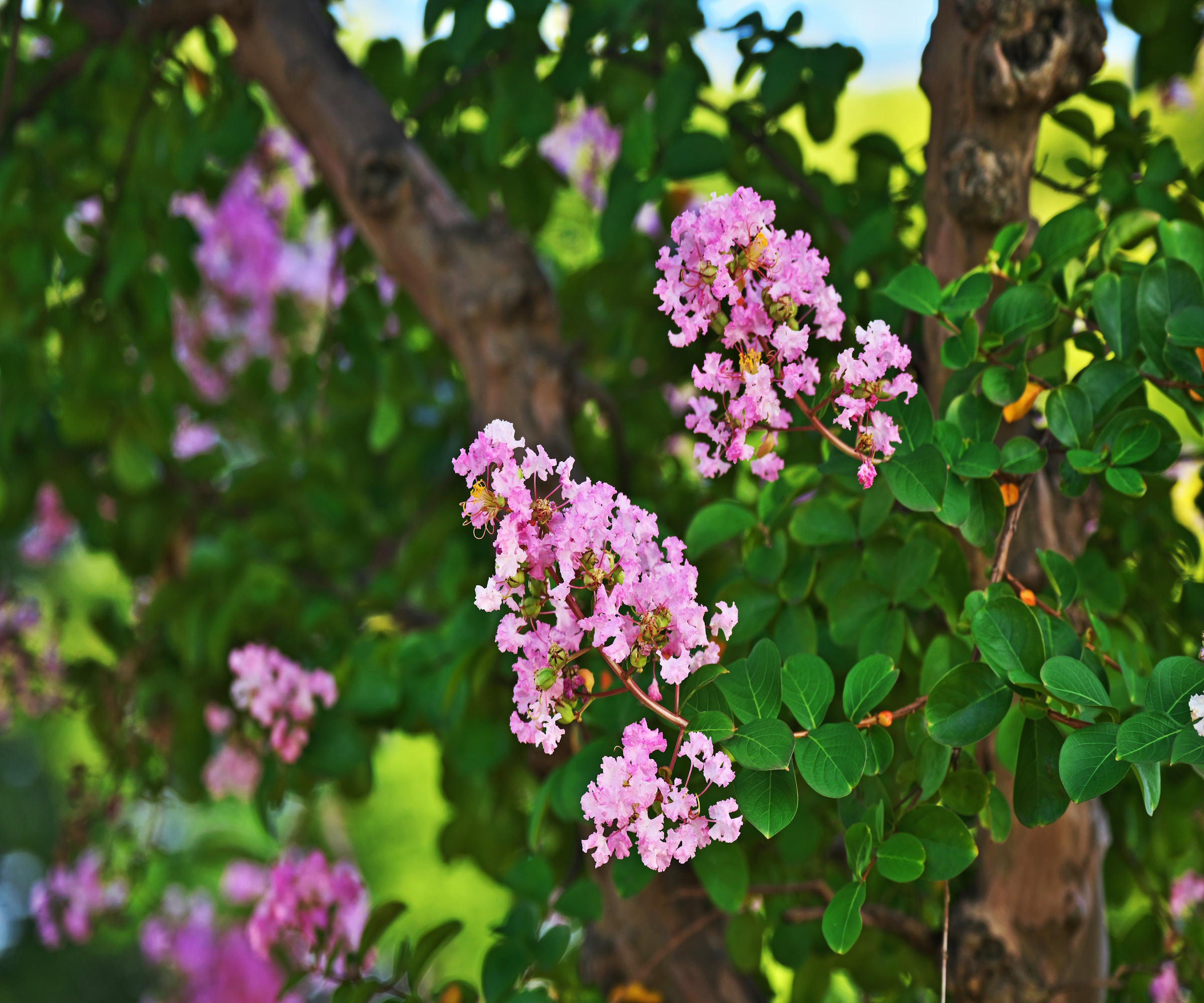
Crepe myrtle – or crape myrtle – is a striking tree that offers year-round interest, and grows very well in pots.
‘This beautiful tree has large trumpet-shaped flowers that often have an orange tint to them,’ says Lindsey Hyland, founder of Urban Organic Yield. 'Crape myrtles also have good fall color, with attractive peeling bark. I love how the branches are always thick enough to handle being in pots.’
Choose from flowers of white, pink or purple, which bloom from late spring through summer. Some varieties flower until the first frost in fall.
Crepe myrtle trees need full sun to thrive, and in frost-prone areas will need to be overwintered in a greenhouse or conservatory. Learn how to prune crepe myrtle to keep your trees looking their best.
USDA hardiness zones 7 - 10.
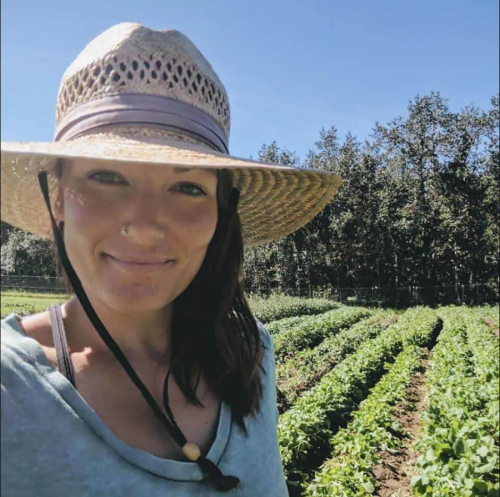
Lindsey Hyland is a gardening expert and the founder of Urban Organic Yield. She grew up in Arizona and attended the University of Arizona’s Controlled Environment Agriculture. From outdoor food gardens to container planting, to aquaculture and hydroponics, her site covers a range of topics with useful information and step by step guides.
8. Bay tree

As well as creating a sculptural feature, bay trees are aromatic herbs that have wonderfully scented leaves that can be used in cooking fresh or dried.
Bay trees look particularly stunning in pairs flanking a doorway, or can be positioned next to seating areas on the patio for outdoor dining ideas. They thrive in containers and can be clipped into attractive ball or pyramid topiary shapes.
‘A bay tree is very easy to look after, provided you give it a good sunny spot and feed it regularly,’ says Aaron Bertelsen. ‘Prune every spring, both to keep it at the size you want it and to reduce any congestion.’
It’s a good idea to repot bay trees every few years to keep them healthy and encourage fresh growth. Bay trees are an excellent choice for planter box ideas.
Eucalyptus trees are similarly fragrant which will grow well in pots.
USDA hardiness zone 7 (grow indoors in cooler climates).
9. Banana tree
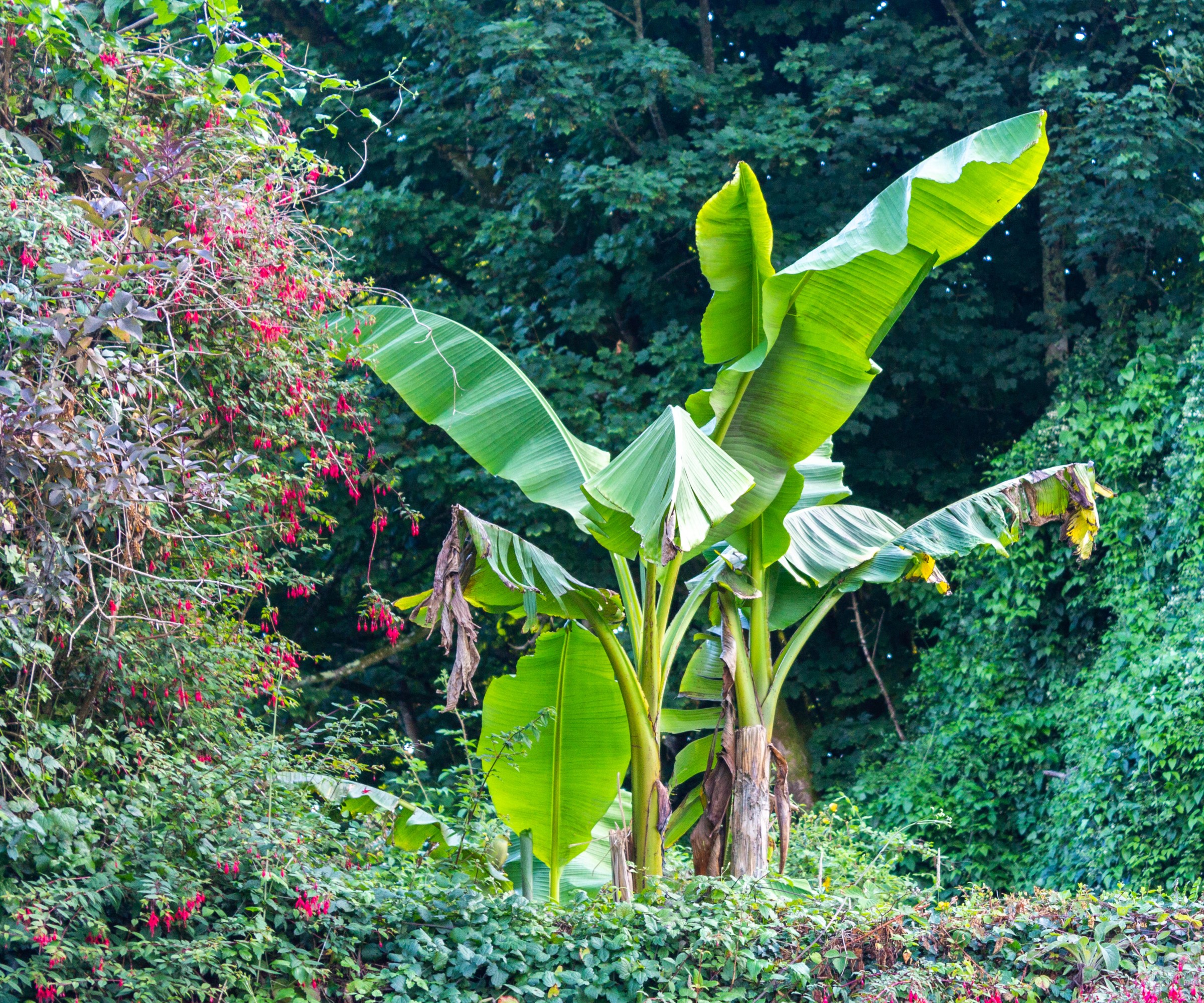
Banana trees are some of the best trees to grow in pots if you want to add a tropical garden idea to your patio. But bear in mind if you are growing a banana tree in the garden this will generally be for their ornamental leaves, rather than for fruit, unless you live in a climate of at least 60ºF (15°C) for most of the year.
‘f you live in a cooler climate, then a banana tree still brings a taste of tropics to your landscaping. The growth of these trees is usually stunted by the colder weather enough that they can live in the pot for an extended period of time.
Smaller varieties of cold hardy banana trees are particularly well suited to climates with colder winters, as they can be brought inside and enjoyed as a houseplant.
USDA hardiness zones 6 - 11.
10. Rhododendron
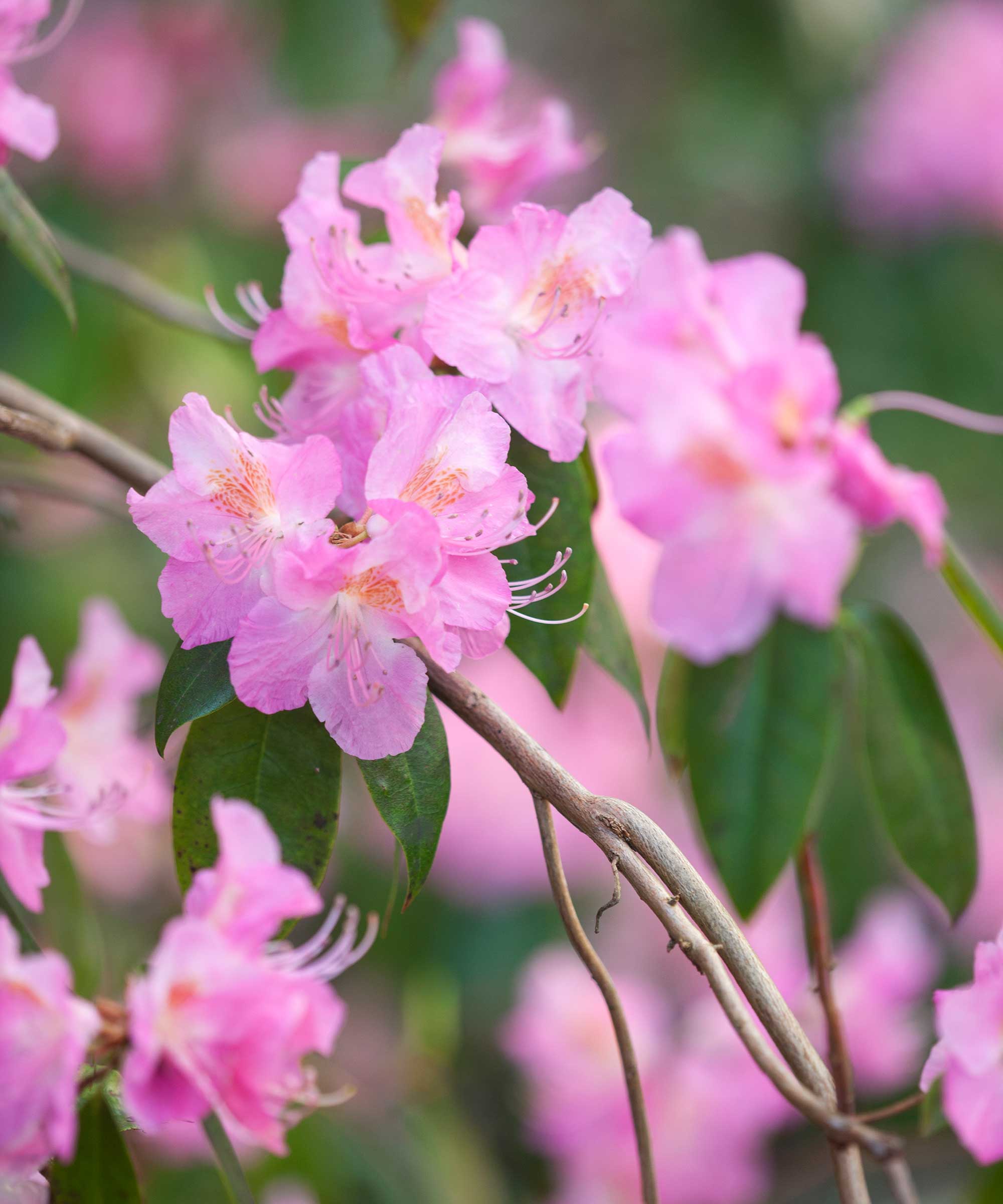
As well as the popular shrubs, rhododendrons are also available in tree form – R. arboreum. Although after several decades they can eventually reach great heights of over 40 feet, they are slow-growing trees that will live happily for years in a pot, so it is worth learning how to grow rhododendrons.
As an evergreen tree, it possesses attractive dark green leaves year round, and will thrive in stunted, acidic, or shallow soil conditions.
Be sure you know how to prune rhododendron to keep your potted specimens under control.
USDA hardiness zones 4 - 9.
11. Olive tree
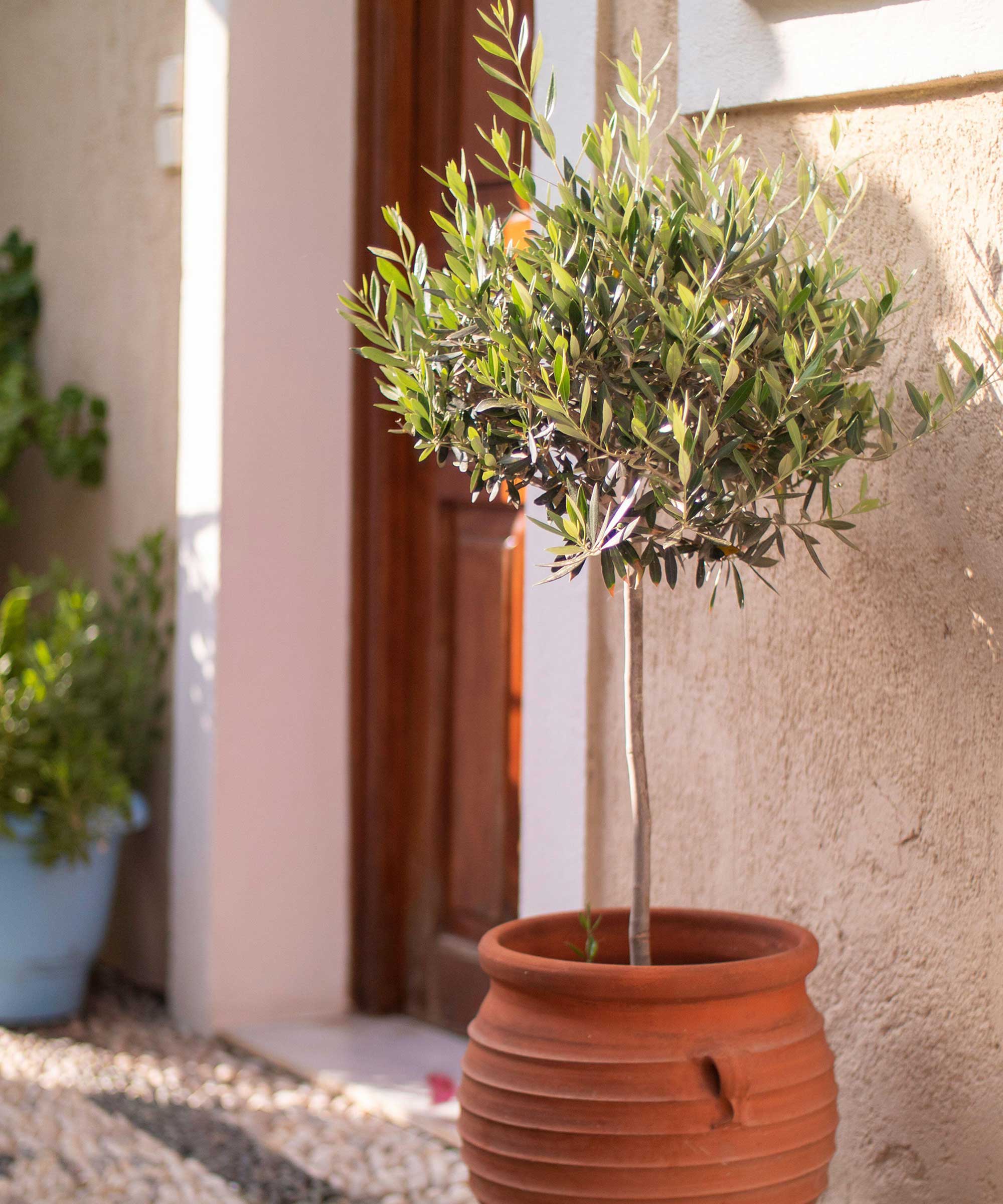
If you want to create a Mediterranean garden, olive trees are ideal and perfectly suited to growing in containers, as they can be moved to safety during excessively cold winters.
Olive trees are not fond of winter, so make sure to cover them, or bring your olive indoors if you know a frost is coming. They love warmth and sun, and they also do well in dry areas. However, they do need the right conditions to produce olives.
In order for the trees to fruit, they will need two months with temperatures below 50°F (10°C), but above 14°F (-10°C), as well as fluctuation between day and night temperatures. Although self-fertile, olive trees benefit from cross pollination.
If you don’t have the right conditions to grow olives, don’t be too disappointed, as they’re such elegant evergreen trees. You can fertilize them in the spring for the best results.
You also need to know how to prune olive trees to improve their shape and increase the chances of fruit production.
USDA hardiness zone 4 - 9.
12. Apple tree

Smaller varieties of apple tree are perfect for growing in pots on the patio. Not only are varieties grown on dwarf rootstock usually quicker to fruit, but they are often better quality than larger trees.
When choosing a variety of apple tree, you need to consider pollination. Self-fertile cultivars are available, although it’s generally recommended to have at least two different partner trees nearby for cross-pollination.
When planting apple trees in pairs, opt for different varieties of apple tree that flower at the same time.
If you only have room for one apple tree, Red Falstaff is a great choice as it is heavy cropping and very hardy. Apples trees are among the best fast growing fruit trees so you will enjoy a well sized tree before you know it.
USDA hardiness zones 3 - 8.
13. Starry magnolia
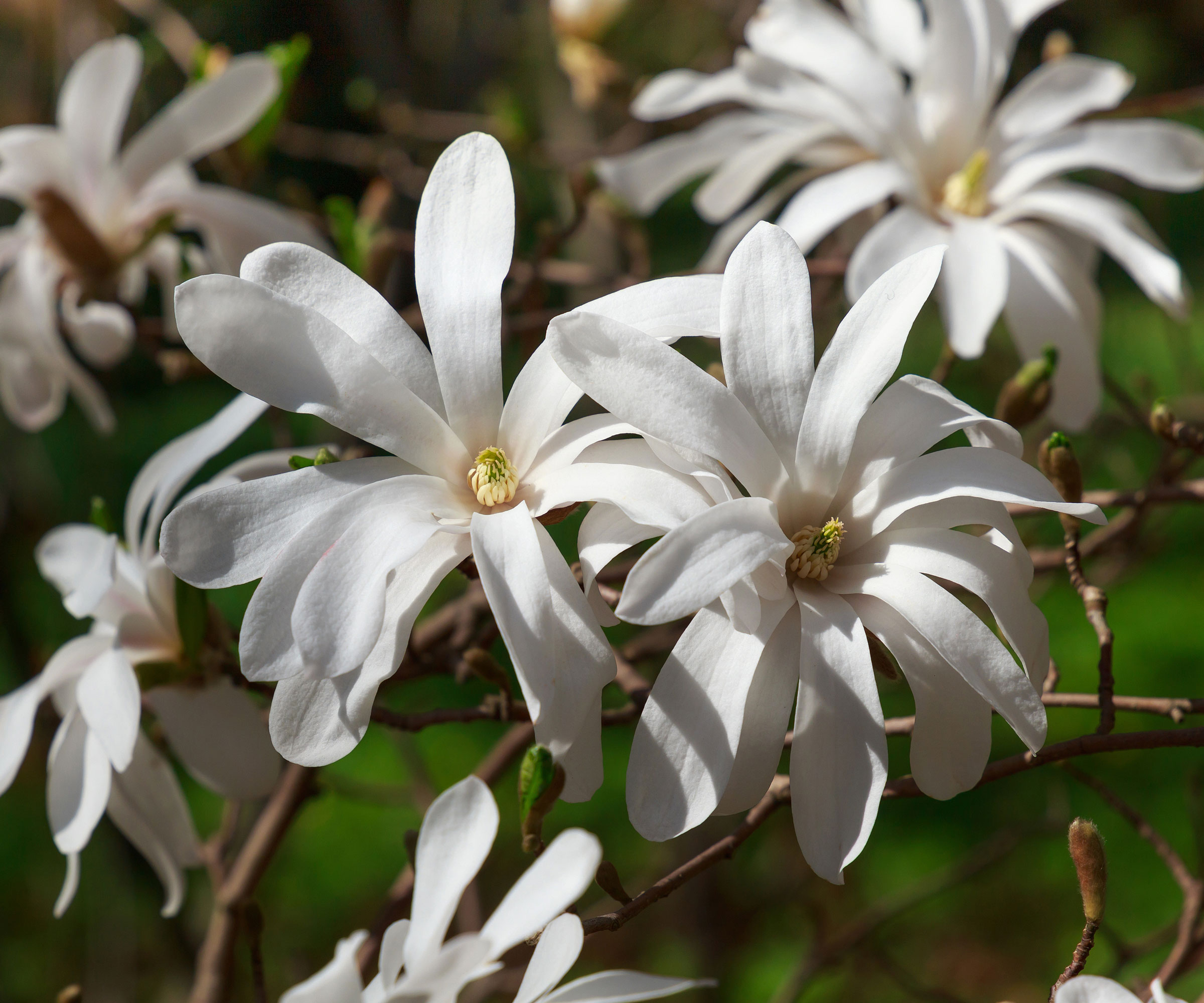
While most types of magnolia will grow too large to plant in pots, starry magnolia is a more compact, bushy tree that produces the most beautiful white, star-shaped flowers.
The tree flowers in the spring and exudes a delicate fragrance, adding a romantic air to a patio seating area, making it one of the best magnolia varieties.
Position starry magnolia in a sheltered spot, and plant in neutral to acid soil that is well drained.
When established, they are low maintenance, and require only mulching in spring, and learn how to prune a magnolia tree lightly in the summer.
USDA hardiness zones 3 - 9.
14. Kumquat

Citrus trees make for some of the best indoor trees, but you can grow them outside in the right climates.
If you’ve never tried kumquat, then you most definitely should – you can eat the entire thing, skin and all.
Producing small orange fruits and flowers that bloom in the summer, these compact trees can be easily grown in pots, and are one of the hardiest citrus fruits.
Position them in full sun, and plant in moist, well-draining soil. However, you don’t need to worry about cross-pollination or cold weather killing it, as it is hardy down to 18°F (-8°C).
USDA hardiness zones 8 - 10, and they may need to be brought indoors for the winter.
15. Flowering dogwood
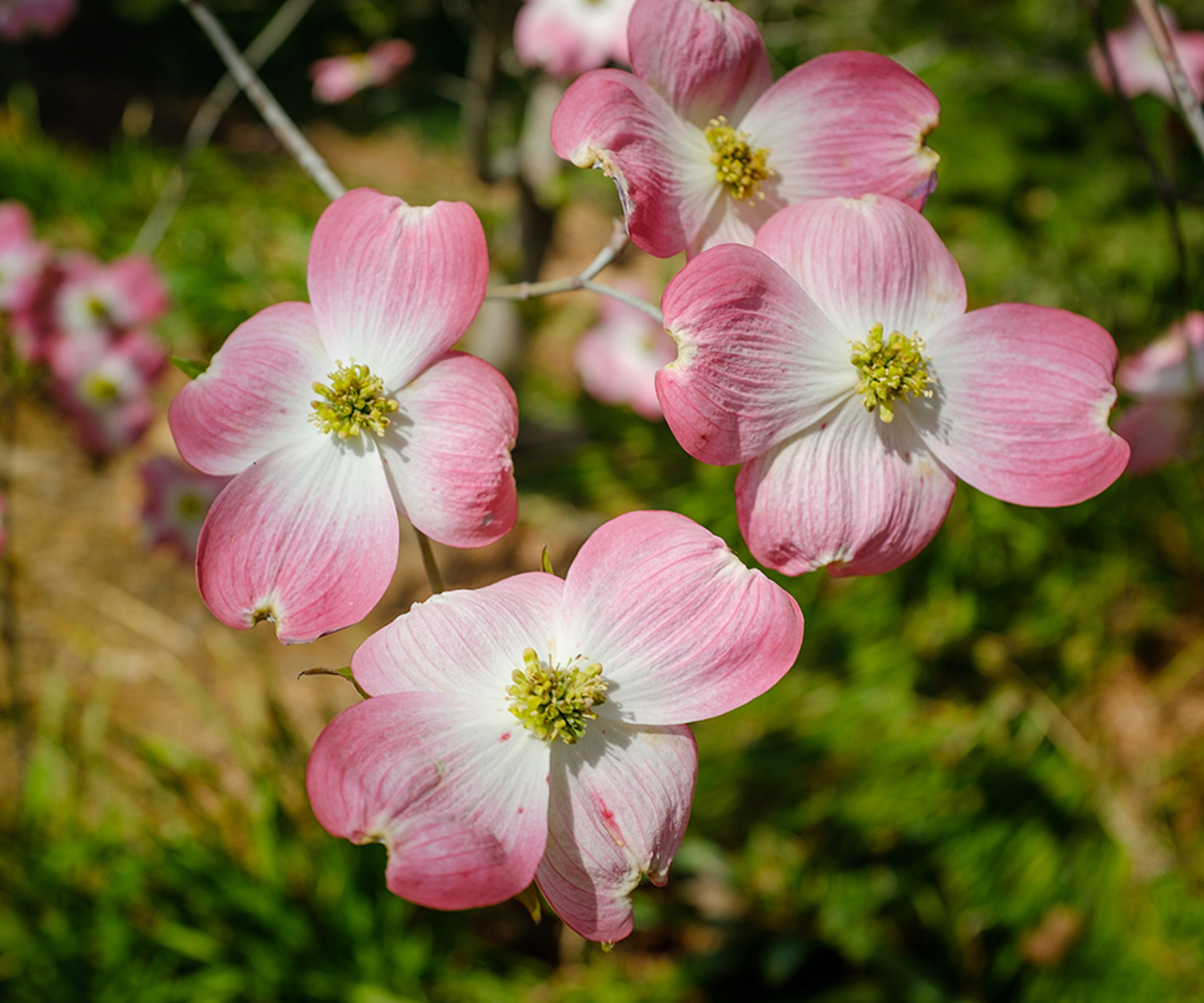
If you're considering growing flowering dogwood trees in pots, make sure to choose smaller or dwarf options, which are more suited to containers than the larger varieties, which can grow as large as 30ft.
Red pygmy and Cornus canadensis, or bunchberry dogwood, are varieties that have been recommended by our experts in the past.
You should consider fertilizing flowering dogwoods in pots during the growing season to promote healthy growth and blooms. A well-balanced, acidic fertilizer, such as an azalea feed, would work very well.
USDA hardiness zones 5 - 9.
16. Edible fig

Growing a fig tree in a container is a great way to add some height and drama to a front porch or patio, and of course to create that wonderful Mediterranean look.
Once established, a fig tree in a container will usually produce more fruit than one planted in the ground, owing to the roots being constricted.
They perform best when kept fairly compact with a short main stem, and they do like a very sunny spot. You can repot a fig every three years to increase the size of your tree.
USDA hardiness zones 7 - 11.
FAQs
Which trees can remain in pots?
Trees can remain in pots indefinitely if you can find a container large enough to accommodate their maximum mature size. Otherwise, you will need to plant them in the ground when they grow too large.
Opt for dwarf varieties of container-friendly trees, such as Japanese maples and small conifers. Bay trees, small citrus trees and olive trees are also good options.
Bear in mind that most trees will need potting on to a larger container every few years, when they have outgrown their pot.
Can trees survive in pots over winter?
Some trees can survive in pots over winter, but this will largely depend on your local climate.
In warmer regions, for example, citrus trees can stay outside year round, but in regions that experience cold winter nights of below 50°F (10°C), they will need to be brought inside.
Japanese maple trees are excellent choices for pots in most climates, and can survive very cold winters where temperatures reach as low as -20°F (-28°C).
There are so many wonderful options when it comes to the best trees to grow in pots, and the great thing about them is you can grow them even on the smallest of balconies or terraces. You can even grow a persimmon tree in a container, if you wanted a more unusual fruit tree to try.

Melanie has worked in homes and gardens media for two decades. Having previously served as Editor on Period Living magazine, and worked on Homes & Gardens, Gardening Etc, Real Homes, and Homebuilding & Renovating, she is now focusing on her passion for gardening as a Senior Editor at Gardening Know How. As a keen home grower, Melanie has experimented with pretty much every type of vegetable at some point – with mixed results. Often it is the simplest things that elude you, which may explain why she just can't seem to master zucchinis.
- Rachel Crow
- Rachel BullHead of Gardens
